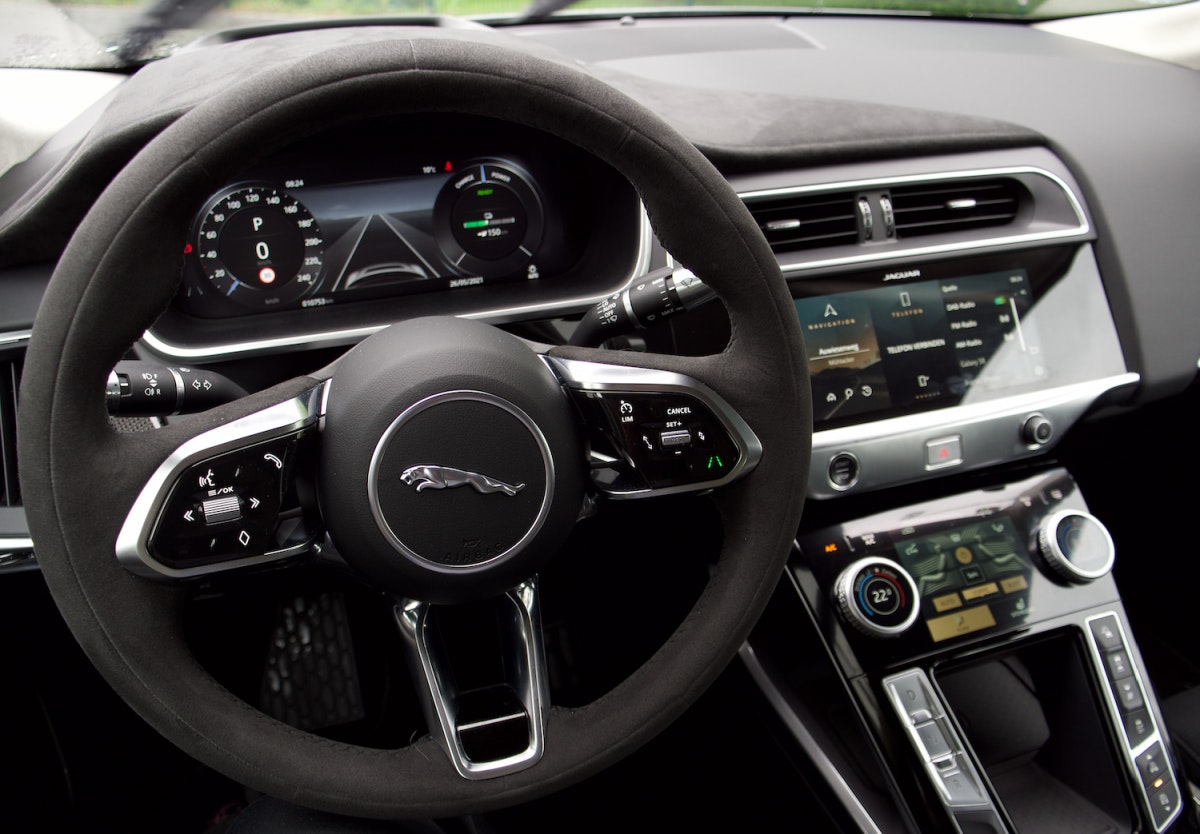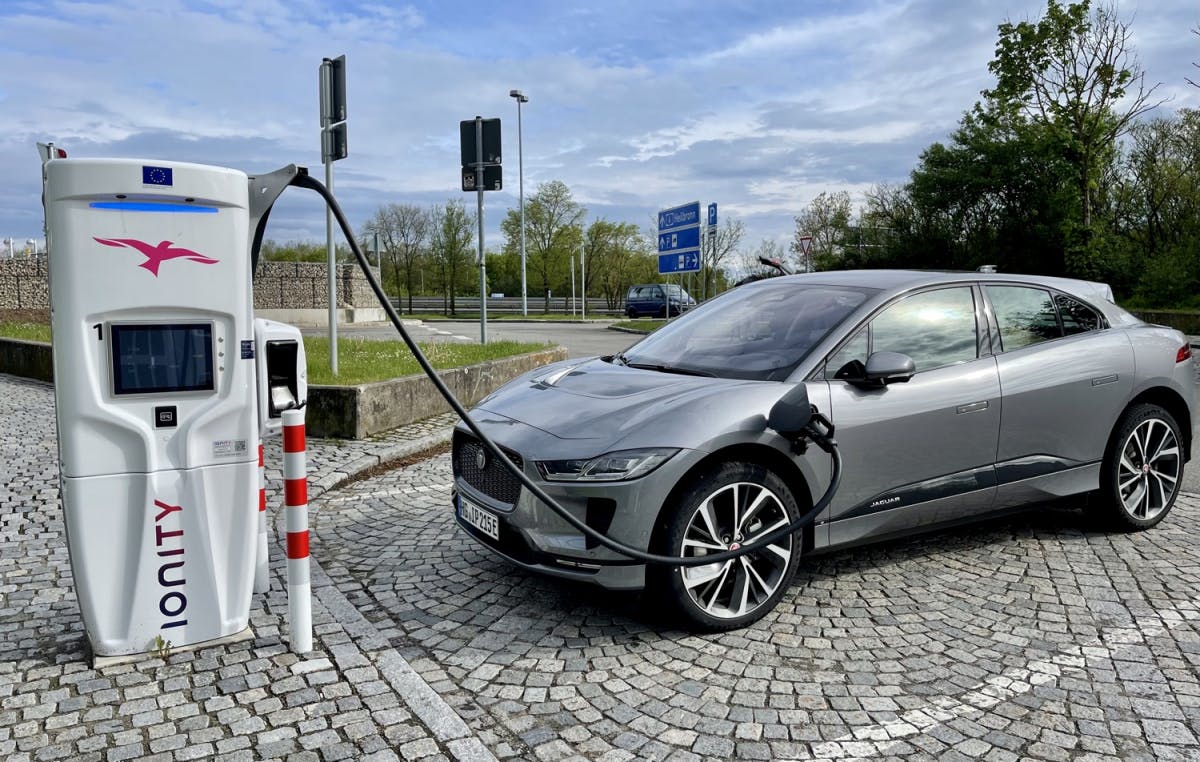Jaguar I-Pace 2021 in the test: the underrated performance electric car
When it comes to electromobility, the Jaguar I-Pace usually receives little attention – completely wrongly, as our test over 2,000 kilometers with the sporty premium electric car shows.
The year is 2018. While Tesla has already made a name for itself in the field of electromobility and is considered a pioneer in future mobility, most traditional car manufacturers – especially in the premium segment – are still in a deep slumber. Manufacturers like BMW, who already have a first-class electric car in their portfolio with the i3, are even turning their backs on technology in order to concentrate on combustion engines.
Only when it became clear to the last one in 2019 that there was apparently no way around electromobility did one manufacturer after another announce the “electrification of its fleet” – be it Mercedes-Benz with the EQC, Porsche with the Taycan or Audi with the E-Tron.
At least that applies to the German premium manufacturers. The British brand Jaguar, on the other hand, launched its first fully electric model back in 2018: the I-Pace. The problem here is that although the sporty performance electric car has been on the market for three years, only a few know it.
We took a closer look at the Jaguar I-Pace 2021 – and explain why it is one of the most underrated electric cars.
The Jaguar I-Pace was ahead of its time
400 hp, almost 700 Newton meters of torque, a 90-kilowatt-hour battery and a range of 480 kilometers in the WLTP cycle. These were the key data with which the first fully electric I-Pace began in the summer of 2018 to make electromobility socially acceptable outside of the Tesla world. In fact, at the time, the 4.68-meter-long SUV was the only premium electric car for longer journeys that someone who didn’t want a Tesla could buy.
The Jaguar I-Pace was a real highlight for fans of electromobility. However, with prices between 78,000 and 100,000 euros, the vehicle did not appeal to the electric car enthusiast who wanted to help shape the mobility transition, but rather to a wealthy group of buyers with premium standards who value sportiness and performance.
Unfortunately, at the time, it was not yet enthusiastic about electromobility. The public charging infrastructure was too poorly developed, the reservations about the new drive technology were too great – especially since there were neither the enormous state subsidies of up to 9,000 euros at the time, nor the government’s commitment to really wanting to promote electric mobility. And so the Jaguar I-Pace remained a collector’s item in a way. In 2018 just 191 vehicles were registered in Germany, and in 2019 954.
The Jaguar I-Pace was the first serious premium electric car outside of the Tesla world. (Photo: Frank Feil)
In 2020 in particular, electric mobility picked up speed – and sales of the I-Pace still fell short of Jaguar’s expectations. Because now there was another problem: Neither the single-phase seven-kilowattt charger nor the outdated software were still up-to-date. Jaguar could not come up with its “own” fast charging network, as was meanwhile available from the German premium brands in the form of Ionity.
And so the British decided to give the I-Pace a facelift.
Jaguar I-Pace 2021: eleven-kilowatt charger and over-the-air updates
Essentially, Jaguar has accepted the aforementioned criticism for the 2021 model year: The Jaguar I-Pace now has a three-phase on-board charger with eleven kilowatts, and the infotainment system has been completely redesigned. In fact, the I-Pace is the first Jaguar model to feature the new Pivi Pro system. Thanks to the integrated 4G SIM card, over-the-air updates are also possible. Otherwise, there are still minor adjustments to the exterior design and a new PM2.5 filter for filtering ultra-fine particles in the interior.
Time to go. For our long-distance test, we decided to drive almost 650 kilometers to Berlin. We unlock the I-Pace and the handles let into the door extend. Although this is only a tiny detail, it is an important factor for the vehicle’s aerodynamics.
Once you have taken a seat behind the steering wheel, it quickly becomes clear that Jaguar does not compromise on the materials used and their workmanship. Everything is the finest. In contrast to other manufacturers, the British have not embarked on any experiments: electromobility and progressive design, yes, but not at the expense of the luxurious ambience.
We connect our smartphone to the I-Pace and program the travel route. The menu navigation is simple and intuitive, and the user interface is well designed. Nothing jerks. For example, the energy flows during the journey and the charging process are animated in detail. This is also only a minor thing, but it sets an electric car in the premium segment apart from the crowd. The same applies to the razor-sharp 3D surround camera, which ensures a seamless 360-degree all-round view. This is by no means a matter of course, because savings are often made with the camera quality of such systems.

With a trunk volume of 656 liters (1,453 liters including seating area), the Jaguar I-Pace 2021 also offers enough space for families. (Photo: Frank Feil)
Jaguar I-Pace 2021: Comfortable long-haul journeys
It starts with a fully charged battery. At an outside temperature of twelve degrees, the on-board computer puts the range at 350 kilometers. When the route guidance is started, the range suddenly drops to 260 kilometers. Jaguar later confirmed to us what was already clear to us at that moment: our test car had a software error. This has long been fixed in the vehicles delivered to end customers, but for us it means that we have to completely deactivate features such as the charge planner, as it is de facto unusable due to the incorrect range calculation.
Apart from that, the Jaguar I-Pace cuts a fine figure on the long haul. In the interior, the occupants have a surprising amount of space in both the front and rear seats. The chassis is perfectly tuned in comfort mode and effortlessly absorbs even larger bumps. Consumption levels off at speeds between 120 and 130 kilometers per hour at around 25 to 26 kilowatt hours per 100 kilometers. At temperatures above 20 degrees, 22 to 24 kilowatt hours should also be feasible. This results in a realistic range of 350 to 400 kilometers – of course also depending on the respective route profile. In view of the performance and the all-wheel drive, however, these are quite acceptable values.
On our 650-kilometer journey to Berlin, we take three charging breaks – two take 15 minutes, one 30 minutes. At the fast charging stations along the motorway, the I-Pace achieves a charging power of around 108 kilowatts at its peak and maintains this up to around 60 percent SoC (State of Charge). Compared to a Porsche Taycan or Audi E-Tron GT, this is not exactly a record, but it is solid for the fact that the I-Pace is actually already three years old.

The Jaguar I-Pace 2021 charges with up to 108 kilowatts at the fast charging station and has a range of 350 to 380 kilometers. (Photo: Frank Feil)
Jaguar I-Pace 2021: Electric performance for every terrain
Let’s move from the long-haul topic to the topic of performance, because here the Jaguar is completely in its element. The two permanent magnet synchronous motors develop an output of 294 kilowatts (400 hp) and an immediately usable torque of 696 Newton meters. The sprint from 0 to 100 kilometers per hour takes just 4.8 seconds.
On the motorway, the optionally available active air suspension automatically lowers the I-Pace by ten millimeters from 105 kilometers per hour, thereby improving aerodynamics. On the other hand, torque vectoring by braking (TVBB) is used on winding roads. The front and rear wheels on the inside of the curve are controlled and braked independently of each other, which counteracts rolling and noticeably improves traction at higher speeds. Of course, the throttle response, steering resistance and damper stiffness can also be individually adjusted.
Jaguar limits the top speed to 200 kilometers per hour. The I-Pace can effortlessly maintain this speed even over long distances. Several acceleration processes with maximum power consumption in direct succession? No problem for the performance SUV. However, you pay for such a driving style – as with any electric car – with a significant loss of range. Anyone who is on the move beyond 180 kilometers per hour for a longer period of time will be back at the charging station after 200 kilometers at the latest.
If we come from the autobahn to the terrain, after all, the I-Pace is an SUV. Here, the driver is supported by the starting aid (Low Traction Launch) when starting on slippery surfaces, while the Adaptive Surface Response System (AdSR) permanently monitors the area around the vehicle and adapts the engine and brake settings to the different conditions. In this way, the I-Pace takes full advantage of all-wheel drive. If you have the aforementioned active air suspension, you can also raise the I-Pace by as much as 50 millimeters off-road.

In the interior, the Jaguar I-Pace 2021 impresses with high-quality materials and a successful infotainment system. (Photo: Frank Feil)
Jaguar I-Pace 2021: The insider tip among electric cars
Viewed in its entirety, the Jaguar I-Pace 2021 is a real insider tip – for all those who value a high-quality interior in combination with first-class performance. And that doesn’t just mean the sprints from 0 to 100 kilometers per hour in 4.8 seconds, but rather the first-class traction and the sports car feeling provided by the perfectly coordinated all-wheel drive and the adaptive chassis.
Of course, the I-Pace is neither a bargain nor a range wonder. Compared to the competition, however, he does a lot of things right, not least because the Brit creates a good balance between comfortable long-distance vehicles, sports cars and SUVs. In any case, it will be interesting to see whether Jaguar can still turn the tide of the I-Pace with the facelift. The vehicle deserved it.



